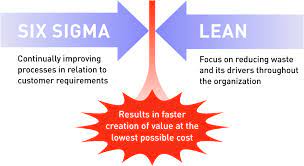In a world driven by competition and the pursuit of excellence, organizations are constantly seeking ways to improve their processes and deliver top-notch quality to their customers. One methodology that has gained widespread recognition for achieving this is Six Sigma. In this blog, we’ll take you on a journey to explore the fundamental concepts, methodologies, and benefits of Six Sigma.
Chapter 1: What is Six Sigma?
Six Sigma is a data-driven methodology and philosophy for process improvement. It was developed by Motorola in the 1980s and has since been adopted by countless organizations worldwide. At its core, Six Sigma aims to reduce defects, improve efficiency, and enhance customer satisfaction. The term “Six Sigma” itself refers to a statistical measure of process variation, signifying that a process is operating with extremely low defects—approximately 3.4 defects per million opportunities.
Chapter 2: DMAIC Methodology
One of the key components of Six Sigma is the DMAIC methodology, which stands for Define, Measure, Analyze, Improve, and Control. This structured approach provides a roadmap for process improvement:
- Define: Clearly define the problem, project goals, and customer requirements.
- Measure: Gather data and measure the current performance of the process.
- Analyze: Identify root causes of defects and inefficiencies.
- Improve: Develop and implement solutions to address the identified issues.
- Control: Establish control mechanisms to sustain the improvements over time.
Chapter 3: Roles in Six Sigma
Six Sigma also introduces specific roles within the organization to drive and support the improvement efforts. These include Champions, Master Black Belts, Black Belts, Green Belts, and Yellow Belts. Each role has its own responsibilities and level of expertise in Six Sigma methodologies.
Chapter 4: Benefits of Six Sigma
Implementing Six Sigma can yield a multitude of benefits for organizations:
- Improved Quality: Reduced defects and errors lead to higher-quality products and services.
- Increased Efficiency: Streamlined processes result in reduced cycle times and cost savings.
- Enhanced Customer Satisfaction: Meeting and exceeding customer expectations.
- Data-Driven Decision Making: Making informed decisions based on data and facts.
- Cultural Transformation: Fostering a culture of continuous improvement and employee engagement.
Chapter 5: Real-World Examples
Explore real-world success stories of organizations that have leveraged Six Sigma to achieve remarkable results. From manufacturing giants like General Electric to service-oriented businesses like Amazon, Six Sigma has proven to be a versatile and effective methodology.
Chapter 6: Getting Started with Six Sigma
Ready to embark on your Six Sigma journey? Learn about the steps to get started, including training and certification options, selecting projects, and building a team of Six Sigma professionals.
